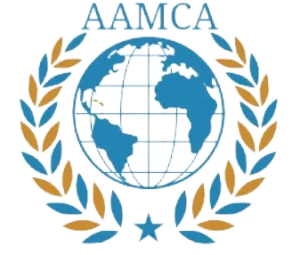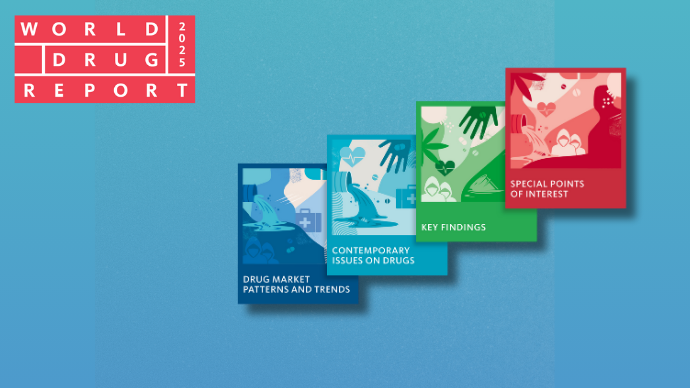Introduction to Global Drug Issues
The increasing prevalence of drug use worldwide presents significant challenges that encompass not only public health concerns but also broader social and economic implications. The 2025 UNODC World Drug Report underscores the complexity of global drug issues, noting a rise in the consumption of various substances, which is closely associated with escalating global instability. This multifaceted crisis is exacerbated by factors such as poverty, social disintegration, and political turmoil, which create fertile grounds for organized crime to thrive. Vulnerable regions are particularly at risk, as criminal enterprises capitalize on weakened governance structures, further complicating efforts to manage and mitigate the drug problem.
In her statements, Ghada Waly, the Executive Director of the United Nations Office on Drugs and Crime (UNODC), emphasizes the necessity of adopting a comprehensive and multifaceted strategy in addressing drug-related challenges. This integrated approach not only focuses on law enforcement but also highlights the critical importance of prevention, treatment, and education. By addressing the root causes of drug use, including socio-economic disparities, the global community can work towards more sustainable solutions. Waly’s assertion reinforces the paradigm shift towards viewing drug use not merely as a criminal issue but as a public health and developmental challenge that requires coordinated efforts from all sectors of society.
Moreover, understanding global drug trends necessitates a detailed examination of the evolving landscape of drug markets and their consequences. The illicit drug trade can destabilize nations, contributing to violence and corruption. Consequently, addressing these challenges calls for an array of stakeholders, including governments, non-governmental organizations, and local communities, to collaborate effectively in developing targeted interventions. As the 2025 report highlights, the urgency of a collective response is paramount in tackling the interlinked issues of drug use, organized crime, and the resultant socio-economic implications for different regions worldwide.
Current Drug Use Statistics and Trends
The 2025 UNODC World Drug Report provides crucial insights into the evolving landscape of global drug use, particularly in 2023. Statistical data reveals that approximately 5.5% of the world’s population is engaged in illicit drug use, marking a steady increase from previous years. This upward trend can be attributed to several factors, including the increased availability of substances and changing societal attitudes toward drug use.
When examining specific substances, cannabis remains the most widely used drug, with over 4% of individuals aged 15-64 reporting its use in the past year. This represents a significant rise, demonstrating that cannabis use continues to gain acceptance in various regions, spurred by legalization efforts and shifting cultural perspectives. Following cannabis, the disturbing trend of opioid use persists, with an estimated 0.6% of the global adult population using opioids, including prescribed pain relievers and illicit substances like heroin. The ramifications of opioid use are severe, contributing to increased rates of addiction and overdose deaths.
Cocaine use also shows a troubling rise, especially in North America and parts of Europe, where usage rates have climbed to approximately 0.4%. The availability of high-purity cocaine has played a significant role in this increase, leading to heightened health risks among users. The report also highlights a concerning emergence of new vulnerable populations, such as young adults and marginalized communities, who are increasingly at risk of drug exposure and addiction. Moreover, the interplay between socio-economic factors and drug use patterns demands attention, as it may shape future trends.
This comprehensive analysis underscores the need for targeted interventions and policies to address the complex issue of drug use worldwide. By understanding these statistics and trends, stakeholders can work effectively to mitigate the consequences of substance abuse in diverse communities.
The Evolving Landscape of Drug Trafficking
The global drug trafficking market is undergoing significant transformation, influenced by various socio-economic and political factors. Among the most alarming trends is the unprecedented increase in cocaine production and usage, particularly in regions such as South America. In recent years, countries like Colombia have seen a dramatic rise in coca cultivation, leading to heightened availability of cocaine on the international market. This increase is not only limited to the Americas; it is also accompanied by a concerning rise in the consumption of synthetic drugs worldwide, fueled by advancements in manufacturing processes that allow for the rapid production of substances such as fentanyl and methamphetamine.
Moreover, the dynamics of drug trafficking are shifting geographically, with new trafficking markets emerging in Asia and Africa. In Asia, the Golden Triangle—an area historically known for opium production—is now witnessing an increase in methamphetamine trafficking, significantly affecting regional stability. Similarly, in Africa, criminal organizations are capitalizing on political instability and weak law enforcement to establish new supply routes, leading to violent competition between gangs. These developments highlight the adaptability of organized crime, which seeks to exploit global crises and societal vulnerabilities to expand its operations.
Addressing these challenges requires a multifaceted approach, particularly focusing on law enforcement techniques and technological investments. Enhancing intelligence-sharing among countries, adopting advanced surveillance technologies, and utilizing data analytics can provide law enforcement agencies with better tools to combat these evolving threats. Furthermore, understanding the structure and vulnerabilities of criminal organizations is imperative. This knowledge can inform targeted strategies that dismantle trafficking networks and disrupt their operations effectively. As the landscape of drug trafficking continues to evolve, it becomes increasingly essential for nations to strengthen their response mechanisms to combat the intricate web of modern drug trafficking effectively.
Broader Impacts of the Drug Trade
The implications of the drug trade extend far beyond individual health concerns, encompassing significant economic and environmental factors. The economic burdens imposed by drug disorders on health systems and communities are profound. According to the 2025 UNODC World Drug Report, the global costs related to drug-related disorders, including healthcare, law enforcement, and loss of productivity, are estimated to reach billions annually. These staggering figures underscore the urgent need for effective interventions and comprehensive treatment options for individuals suffering from substance use disorders.
In addition to economic repercussions, the environmental degradation associated with drug cultivation and production deserves attention. Illicit drug economies often lead to deforestation, soil erosion, and water pollution as land is cleared for the farming of crops such as coca and opium poppy. For instance, the production of coca in the Andean region has been linked to substantial deforestation rates, which compromise biodiversity and contribute to climate change. Environmental harm not only affects local ecosystems but also reverberates globally, impacting air quality and living conditions for communities downstream.
Moreover, the inadequate treatment options for drug disorders contribute to a cycle of social and economic instability. A lack of proper access to rehabilitation services leads to persistent cycles of addiction, individual neglect, and community disruption. Statistics reveal that individuals without access to treatment are more likely to engage in criminal activities, further straining law enforcement resources. This situation calls for a paradigm shift towards sustainable drug policies that integrate health, social equity, and environmental stewardship.
Addressing these broader impacts necessitates a multifaceted approach that combines public health strategies, economic support for affected communities, and sustainable environmental practices. By acknowledging and addressing the interlinked challenges posed by drug trafficking and usage, a more sustainable and equitable future can be fostered for all stakeholders involved.

